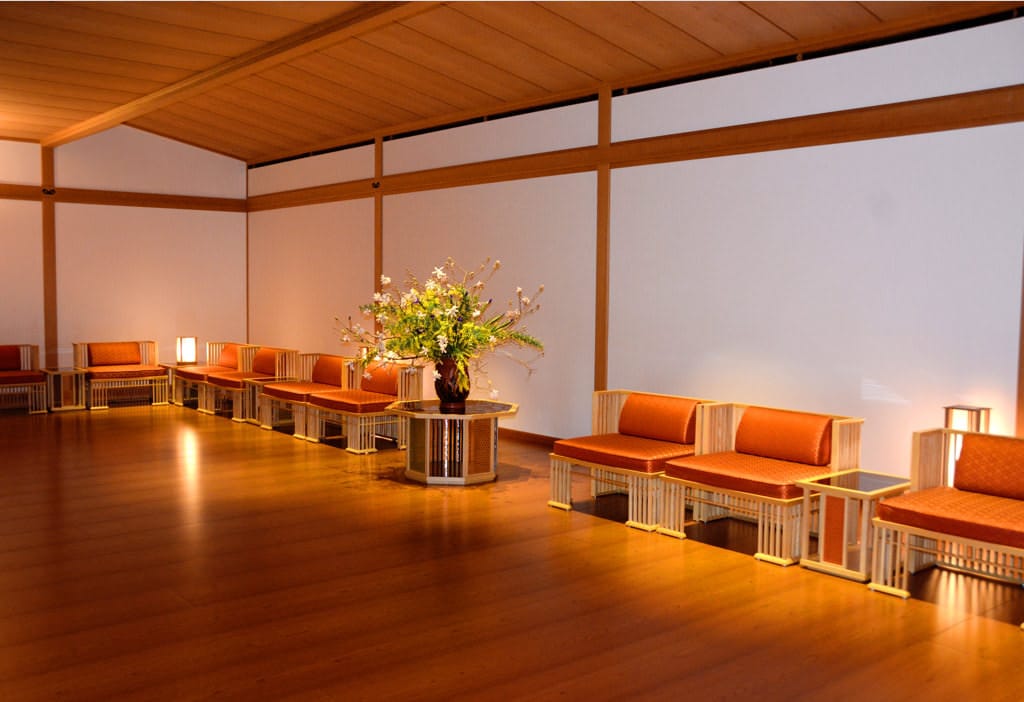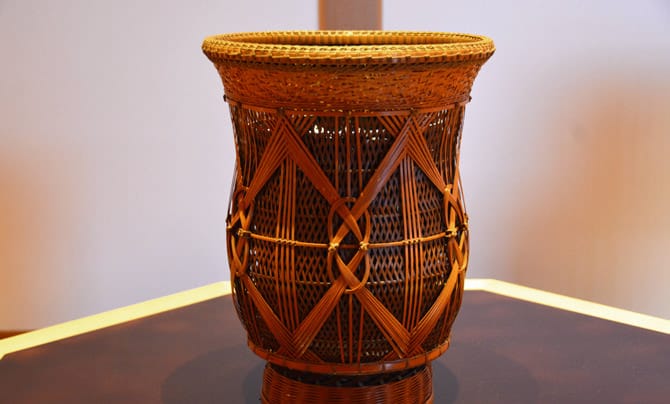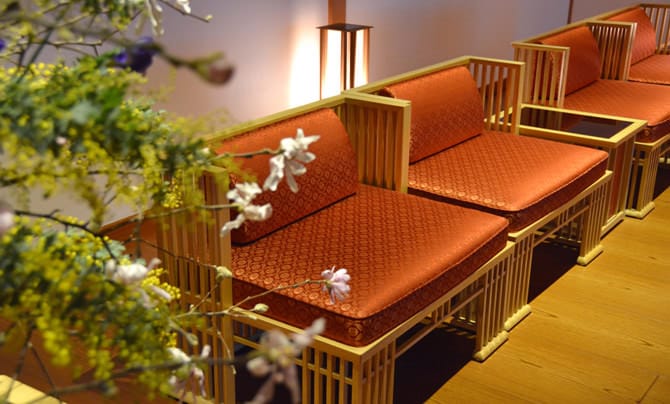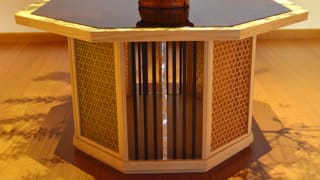Juraku-no-Ma

A space lit by a soft glow reminiscent of paper lanterns
This space is used as a waiting room for invited guests and their attendants during banquets and ministerial meetings.
The character ju carries the concept of gathering together, and raku means peace of mind and joy.
Juraku-no-Ma is intended as a place where peace of mind and joy come together.
Highlights

A Bamboo Craft flower basket
When entertaining guests, a floral arrangement, ikebana, is displayed in this hanakago (flower basket) atop a decorative stand. The vase is the work of the late Hayakawa Shōkosai V, a Living National Treasure.

Comfortable Chairs Await Our Guests
The chairs arranged in this room are crafted using the traditional wood joinery techniques, where pieces of wood are assembled without using any nails. The vivid red upholstery, woven in Kyoto's famed Nishijin district, brings a touch of elegance and brightness to the space.

A Decorative Stand Rich in Traditional Artisanal Skills
The centrally-placed decorative stand is ornamented with lacquer, raden (mother-of-pearl inlays), and bamboo crafts.

Decorative Metal Fittings Symbolizing Hopes for Peace
The design of the decorative metal fittings, used as nail head covers, was inspired by kumihimo traditional Japanese braided cords. The kumihimo motif symbolizes the hope of binding nations and people together.

![Kyoto State Guest House [SP]](https://www.geihinkan.go.jp/wp-content/themes/geihinkan/assets/img/kyoto/common/toplogo_kyoto_sp_bk_en.png)
![Kyoto State Guest House [PC]](https://www.geihinkan.go.jp/wp-content/themes/geihinkan/assets/img/kyoto/common/toplogo_kyoto_bk_en.png)